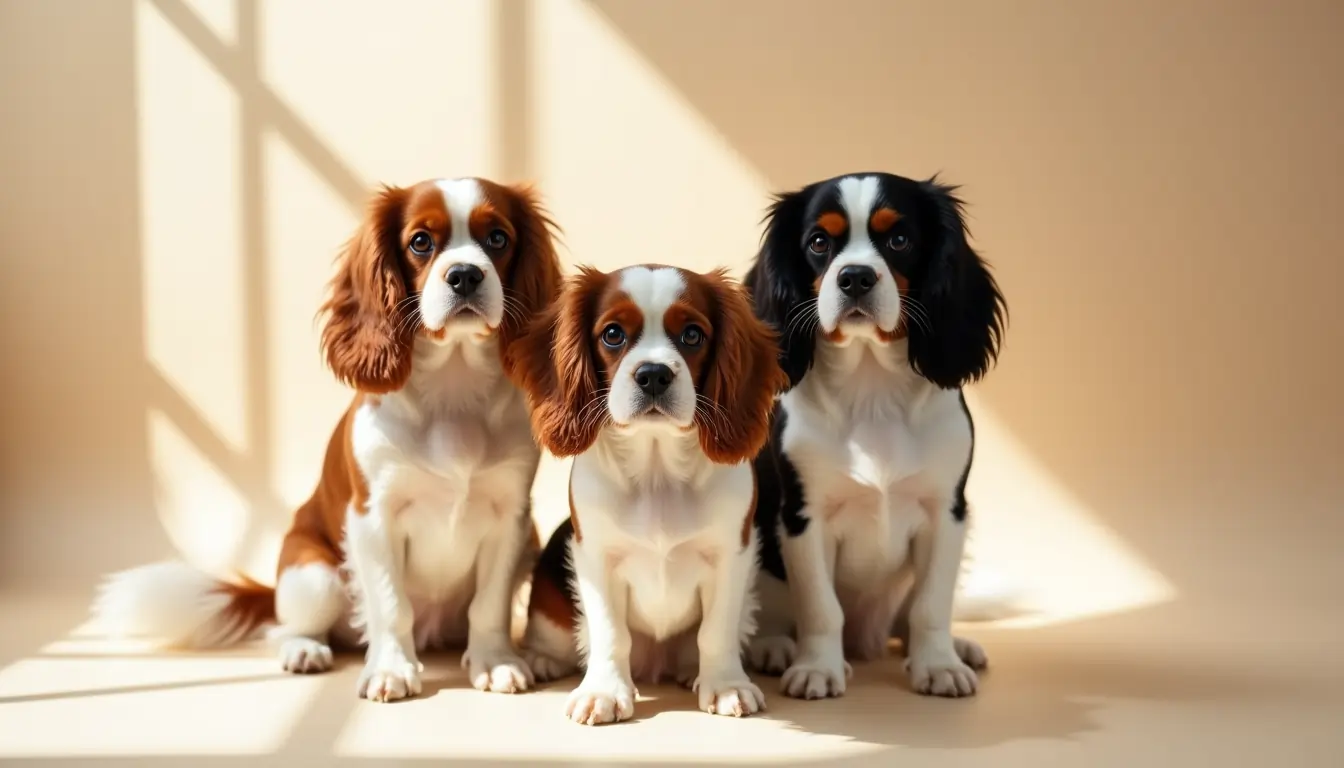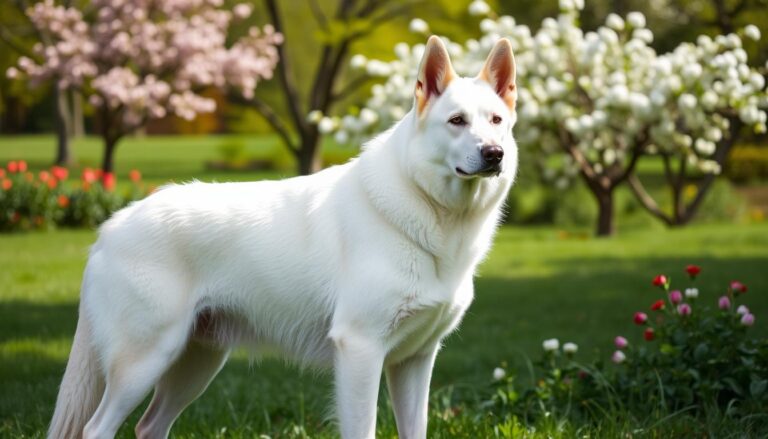The Ultimate Guide to Dog Breeds That Start with C: Discover Two-Word Canine Companions
The Ultimate Guide to Dog Breeds That Start with C: Discover Two-Word Canine Companions
Dog breeds often have distinctive two-word names like “German Shepherd” or “Golden Retriever” – but have you ever wondered why? The world of dog breeds captivates many pet lovers, and breeds starting with different letters create a rich tapestry of canine diversity.
Dog breeds beginning with C form a particularly interesting group. The loyal Cocker Spaniel and intelligent Collie breeds stand out as prime examples. Pet enthusiasts learning about breeds that start with B, D, or other letters will find these classifications valuable. This knowledge becomes essential when choosing your future furry companion.
This detailed guide explores C-named breeds and explains breed naming conventions. You’ll discover how these names connect to each breed’s unique traits and historical roots.
What Are Two-Word Dog Breeds?
Two-word dog breeds make up much of officially recognized canine breeds worldwide. These breeds trace their roots to specific regions. Over 40% of the world’s dog breeds come from the United Kingdom, France, and Germany alone.
Two-word dog breeds follow clear naming patterns that tell us more about them:
- Location + breed type (German Shepherd)
- Looks + breed type (Golden Retriever)
- Job + breed type (Mountain Dog)
- History + breed type (King Charles Spaniel)
The names tell us everything in the breed’s background, job, or appearance. To cite an instance, breeds often carry their birth country’s name. This becomes more interesting because Great Britain and France each have 57 registered breeds, while Germany follows closely with 47 breeds.
Not all dogs with two-word names belong to purebred families. Some belong to “designer dogs” – crossbreeds that combine their parents’ breed names. These mixed breeds usually become family pets rather than working dogs.
Working and hunting dogs from crossbreeding don’t usually get two-word names. People call them by their jobs instead – like eurohounds that race sleds or lurchers that hunt. The Labradoodle stands out here. Despite its blended name, it works both as a guide dog and family companion.
These naming patterns help us grasp each breed’s story and purpose. This knowledge proves valuable whether you want to learn about breeds starting with specific letters or understand how dogs fit into different groups.
Dog Breeds That Start with C
The world of canines brings us some amazing dog breeds that start with C. The Cocker Spaniel shines as one of the most beloved breeds worldwide, thanks to its cheerful and playful nature.
These adorable Cocker Spaniels are the smallest sporting group members. They reach heights of 13 to 15 inches and weigh between 20 to 30 pounds. Their standout traits include:
- Active and affectionate temperament
- Energetic and eager personality
- Strong bonds with their owners
- Excellent compatibility with families
The Cavalier King Charles Spaniel has earned its place among the top 20 dog breeds since the AKC recognized it in 1995. These dogs blend a toy breed’s gentle nature with a sporting spaniel’s athletic spirit beautifully.
A Cavalier King Charles Spaniel’s height maxes out at 13 inches. Their versatility shows in everything they do – from therapy work to sporting activities. This makes them perfect companions for almost any lifestyle.
The breed’s story reads like a royal tale. The Cavalier King Charles Spaniel’s name comes from its deep connection to British royalty. Both King Charles I and his son Charles II loved these dogs deeply. King Charles II even created a special decree that still applies today. His namesake spaniel can enter any public place, including the Houses of Parliament.
Dog lovers who want to learn about dog breeds beginning with b or dog breeds that start with d will find equally rich stories and unique traits. The C-breeds stand out with their amazing variety though. From tiny Chihuahuas to powerful Cane Corsos, each brings something special to the dog world.
Dog Breeds Starting with Other Letters
The alphabet holds many wonderful dog breeds beyond those starting with C. These breeds can help you find your perfect companion. Let me share some notable examples.
Dog breeds beginning with b
B-breeds include an impressive 37 recognized breeds such as the Basenji, Basset Hound, and Bernese Mountain Dog. Small Bichon Frises and powerful Bullmastiffs show the amazing range that fits every lifestyle and living space.
Dog breeds that start with d
D-category breeds stand out with choices like the Dalmatian, Doberman Pinscher, and Dachshund. Each breed serves a special purpose, from the Drentse Patrijshond’s hunting abilities to the historical role of Dogue de Bordeaux as castle guardians.
Dog breeds that start with h
The distinctive H-breeds include the Havanese, Hovawart, and Hungarian Greyhound. These dogs excel in various roles, bringing their special mix of herding skills and companion qualities to families.
Dog breeds that begin with i
Some remarkable breeds make up the I-category. The Irish Setter’s beautiful flowing coat catches everyone’s eye, while the Italian Greyhound packs a big personality into its tiny frame. Most I-breeds come from strong working backgrounds and excel at hunting and herding.
Dog breeds that start with z
Z-category breeds might be few, but they include unique dogs like the Zuchon, a cross between the Bichon Frise and Shih Tzu. Their small numbers make Z-breeds special in the dog world.
Each letter brings its own special traits and stories to the canine world. Belgian breeds excel at work while Irish breeds shine in sports. The rich diversity of dog breeds means you’ll find the perfect match for your lifestyle.
Why Categorize Dog Breeds by Letters
Dog breeds follow a systematic letter-based categorization that serves many practical purposes. The American Kennel Club’s (AKC) classification system groups breeds into seven distinct groups based on their original purpose and traits:
- Sporting Group: Bred for hunting and retrieving
- Hound Group: Developed for pursuing prey
- Working Group: Known for strength and intelligence
- Terrier Group: Created for vermin control
- Toy Group: Bred as companions
- Non-Sporting Group: Diverse purposes
- Herding Group: Developed for livestock management
Alphabetical categorization helps people find their way through the vast world of canines. There are over 200 dog breeds worldwide and this number keeps growing. The World Canine Organization recognizes about 340 breeds globally. This makes systematic organization valuable for professionals and future pet owners alike.
Letter-based categorization plays a vital role in breeding programs. Breeders typically use litter themes or letters, naming all puppies in one litter starting with the same letter. This approach makes it easier to spot possible littermates in a pedigree and keep accurate breeding records.
Visual identification can be tricky despite what many think. Research reveals that breed labels assigned by shelter staff were incorrect at least 75% of the time. This shows why standardized categorization systems and alphabetical organization matter for accurate breed identification and record-keeping.
The AKC’s registration system has specific rules about names. Names are limited to 50 characters, and up to 37 dogs of each breed can share the same name. These guidelines bring order to purebred dog records while protecting each animal’s unique identity.
These categorization systems help people make smart choices about potential pets and appreciate the amazing variety of canine breeds. The systematic approach creates a clear path through the fascinating world of dog breeds, whether you’re researching specific breeds or learning about different categories.
How to Choose the Right Dog Breed for Your Family?
Finding the right dog takes a good look at your family’s situation. The AKC stands as a prominent source of breed information and stresses that dogs need lifelong commitment, not just temporary care.
These key factors will help you pick your ideal breed:
- Living Space Assessment
- Your home size and outdoor access matter
- Check neighborhood rules
- Think about your local weather
- Family Dynamic Evaluation
- The breed’s personality should match your family members’ ages
- Your current pets need consideration
- Your daily routine plays a big role
- Activity Level Compatibility
- Look at your exercise habits
- Your family’s outdoor activities matter
- Daily walks and play sessions need planning
- Financial Planning
- Regular vet care needs a budget
- Grooming costs vary by breed
- Food and supplies need planning
These practical tips will guide your choice:
- Space Requirements: Big breeds need more space, but some adapt well to apartment life with enough exercise.
- Time Commitment: Your schedule should allow regular exercise, training, and social time.
- Family Compatibility: Dogs known for patience work best with young kids.
- Grooming Needs: Professional grooming suits some breeds, while others need basic care.
Good breeders will ask about your lifestyle and living setup. They want their puppies to find homes where they’ll flourish. Research breeds carefully and visit local shelters that house dogs of all types waiting for good homes.
Your search for the perfect dog, whether you want dog breeds that start with c or any other letter, should focus on matching breed traits to your family’s lifestyle. The AKC’s breed selector tool helps narrow down choices based on what you need.
FAQs About Dog Breeds
Want to learn about the world of canines? Let’s take a closer look at some common questions about dog breeds that will help you choose your future furry friend.
What is the most popular dog breed?
The American Kennel Club reports that the Labrador Retriever consistently ranks as the #1 dog breed in America. These dogs excel at various activities, from hiking to city living. They feel right at home during outdoor adventures or while relaxing with family.
Which breeds are best for families?
Your family’s lifestyle plays a vital role in selecting the right breed. Families looking for smaller dogs might want to think over these top choices:
- King Charles Cavalier (great with kids)
- Bichon Frise (hypoallergenic option)
- Havanese (adaptable personality)
The English Labrador stands out as the ultimate family companion, with Golden Retrievers and German Shorthaired Pointers following closely behind.
Are some breeds harder to train?
Each dog has its unique personality, but some breeds need more training effort than others. The most challenging breeds in different weight categories include:
- Saint Bernard (large)
- Chow Chow (medium)
- Beagle (small)
Do dogs recognize their own breed?
Studies show that dogs can identify other dogs as dogs, but they don’t necessarily distinguish between breeds. A fascinating study revealed that puppies can recognize their mothers and siblings using just their nose when they’re 4-5.5 weeks old.
The bond you’ll share with your pet matters more than breed recognition, whether you’re looking at dog breeds that start with c or dog breeds beginning with b. Finding a breed that matches your lifestyle and dedication level should be your priority.
People interested in dog breeds that start with d or other letters should focus on understanding the breed’s temperament and care requirements rather than just their classification. The AKC maintains regular development paths for new breeds, ensuring continued progress in the canine world.
The big world of canine companions becomes easier to understand once you know about breed categories and their traits. From dog breeds that start with c to those beginning with other letters, each group has unique characteristics that might fit your way of life.
Here are the key factors you just need to think over when picking a breed:
- Breed history and original purpose
- Size and space requirements
- Exercise needs and energy levels
- Grooming demands and maintenance
- Compatibility with your lifestyle
- Health considerations specific to the breed
- Training requirements and intelligence levels
You might feel drawn to dog breeds beginning with b like the Bernese Mountain Dog, or dog breeds that start with d such as the Dalmatian. Note that letter categories are just one way to group these amazing companions. The right match depends on your family’s specific situation.
Your experience with different breed categories might help you find hidden gems. To cite an instance, see the happy-go-lucky Havanese among dog breeds that start with h, or the intelligent Irish Setter in dog breeds that begin with i that could match your active lifestyle.
Organizing breeds by letters helps you learn about options you might have missed. Dog breeds that start with z make up a smaller group but has unique breeds that could be perfect for you.
Note that 2 word dog breeds often tell a story about the dog’s background or purpose. Names like German Shepherd or Italian Greyhound give an explanation about their origins and traditional roles.
Looking at different breed categories, from dogs starting with i to others, focus on matching the breed’s natural traits with what your family needs. The perfect companion could come from any letter – finding the right match between your lifestyle and the breed’s characteristics is what counts.
FAQs
Q1. What are some popular dog breeds that start with C? Some popular C-named dog breeds include Chihuahua, Cavalier King Charles Spaniel, Cocker Spaniel, Cane Corso, Chow Chow, Corgi, and Collie. These breeds offer a diverse range of sizes, temperaments, and characteristics to suit different lifestyles.
Q2. Which dog breeds are known to be excellent companions? Several breeds are renowned for their companionship qualities. Some top choices include French Bulldogs, Golden Retrievers, Cavalier King Charles Spaniels, and Labrador Retrievers. These breeds are known for their friendly nature, adaptability, and strong bonds with their families.
Q3. How many official dog breeds are there worldwide? While the exact number can vary, the World Canine Organization officially recognizes approximately 340 dog breeds globally. However, this number is continually growing as new breeds are developed and recognized by various kennel clubs.
Q4. What factors should I consider when choosing a dog breed for my family? When selecting a dog breed, consider your living space, family dynamics, activity level, and financial capacity. Evaluate the breed’s size, exercise needs, grooming requirements, and temperament. It’s also important to assess your daily schedule and ability to provide proper care and attention.
Q5. Do dogs recognize their own breed? While dogs can identify other dogs as dogs, research suggests they don’t necessarily distinguish between specific breeds. However, puppies can recognize their mothers and siblings by scent when they’re 4-5.5 weeks old. A dog‘s bond with its human family is typically more significant than any breed recognition.



